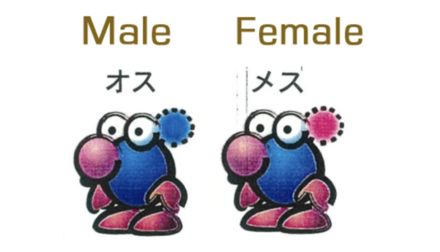
Pikmin developers dished out their aspirations of depicting a somber, mature, and mysterious world in a video game, and what fueled them to create the world of Pikmin in Vol.10 of Nintendo's Ask the Developer interview.
Where Pikmin Developers Drew Their Inspiration From
Pikmin Developers on Experimenting with the Concept of AI

In the tenth volume of Ask the Developer, an interview series by Nintendo, the Nintendo team spoke with the developers behind Pikmin 4, along with the developers of the first Pikmin game joining in as special guests. The developers delved into the origin of the Pikmin series and took us behind the scenes as they also talked about their experiences while creating the game.
Shigefumi Hino and Masamichi Abe, game directors at Sega, told the interviewer that during Nintendo's transition from Super NES to Nintendo 64, they had a strong ambition to utilize the ability of Nintendo 64 to display a large number of characters on screen. It was around this time that the two game directors started discussions of a project that would eventually be what is now known as Pikmin.

Hino said, “Back then, we envisioned a game that would control a lot of characters with AI. The game we had in mind included creatures with AI chips in their heads to make them think a certain way, and you would control them by swapping their chips. So, players would control them by assigning 'thought chips', such as 'combat', 'heal', or 'help friends', to each of them.”
While the developers envisioned a game where players are able to control a lot of characters with AI, they also said that these controlled characters would be capable of emotion and intelligence. Hino further explained, “As they explored the map and gained more experience, their chip capacity would increase. In other words, they'd become smarter. At the same time, we added personalities such as grumpy and cowardly via 'emotion chips', and depending on which emotion chip the character had, the response, such as 'attack' or 'defend', would change.”
Yuji Kando became the programmer to put their vision to life as he joined the team, experimenting with what kind of actions can be applied to a large number of characters with AI.
Pikmin Developers Said They Needed the Character to Stand Out

Junji Morii joined as a character designer for the first Pikmin game, and by then, the game was already astir with little creatures. The initial design for these creatures was described as Yoshi-like and made the gender and personality of each character identifiable from what's on their head. While they found amusement with the creature's resemblance to Yoshi, the developers felt it lacked impact as a character.
Eventually, the team settled on sketches of tiny creatures that each had a leaf on its head. Morii said since the character was tiny, he thought it needed something to help it visually stand out.

“I was strangely attracted to this design. I liked the idea of plants walking,” said Shigeru Miyamoto. “We were saying things like, 'It would be cute if it sucked up water from the leaf on its head'.”
Pikmin Developers on Drawing Inspiration from Cinema

When asked on a particular inspiration that led to the chosen design, Morii brought up how he had admired the work of famed director Tim Burton. He told the interviewer, “Back then, I really liked the world of Tim Burton, so I wanted the designs to not just be cute, but also give a sense of eeriness, or some emotional weight. That's why I was drawing the sketches like this, with a style that layers scribbling lines.”
The team was apparently on the same wavelength, as Hino revealed that he also wanted to take a bold step and depict a somber, mature, and mysterious world during a time when Nintendo was heavily associated with the bright and vibrant.

This led the team of developers to watch Fantastic Planet or La Planète Sauvage (“The Wild Planet”), an experimental independent sci-fi art film released in 1973. “We all had puzzled looks on our faces while watching it,” recalled Hino.
Miyamoto shared that they watched all kinds of films for inspiration. They took an interest in art films and indie films from Europe, which Miyamoto said couldn’t be found in regular video stores at the time. He said that the team of developers was especially intrigued by the innovative modes of expression of experimental footage.
Pikmin Developers Said They Read The Selfish Gene

According to Hino, the team also read a book by Richard Dawkins called The Selfish Gene. Since they were creating a game that dealt with living creatures, Hino said they felt they needed to learn more about the ecology of living things. Hino humourously added that the book was difficult for him to understand.
They begun throwing around ideas on how these creatures move and interact with each other, letting their imaginations run wild. They reminisced on an old conversation describing how they thought the characters should perform actions and interact with enemies, such as the series staple mechanic of latching onto the enemies.

“Also, after defeating an enemy, we thought it would be satisfying if you could carry it back home,” said Miyamoto. “So, we actually had the creatures carry the enemy, and they looked just like ants carrying a cicada.”
From Nintendo Ask the Developer Vol. 10, Pikmin 4—Part 1:

Sources:
Ask the Developer Vol. 10, Pikmin 4—Part 1 interview by Nintendo















